Around 60% of subscribers in a mailing list are inactive at any given time. Re-engaging them helps you bring them back into the sales funnel, and contribute to the revenue stream.
In this post, we will look at the reasons why subscribers go inactive, how to build re-engagement campaigns, write open-worthy winback email subject lines, and more. Let’s get started.
Understanding the Reasons: Why email subscribers become inactive
If someone subscribed to your brand, they must have had a strong reason for doing so. However, with time, their interest may diminish, and the subscriber may be in any one of following situations:
- They will become inactive i.e. they’ll continue receiving your emails but would not open them, nor unsubscribe from your newsletter
- They will unsubscribe
As long as a subscriber has not unsubscribed, there is hope. By analyzing your data, gathering actionable insights, and figuring out what they want either by running a survey or feedback, you get to know their preferences, and have a chance to bring them back via winback email campaigns. But, before you can do that, it is important to understand what the reason for subscriber inactivity may be:
- Cluttered inbox: The email is lost in the midst of other brand emails and the subscriber is not aware of your messages.
- Change in preferences: The subscribers’ preferences and requirements have changed, but they are yet to unsubscribe.
- Information redundancy: The subscriber just wishes to connect with the brand and its competitors, but is not interested in making a purchase.
- Save it for later: The subscriber has put your email on the snooze list and plans to read your emails later.
- High send frequency: You may not have specified your send frequency during the sign-up process and now the subscriber is overwhelmed by the sudden influx of emails.
- Poor subject lines: Most subscribers open the email based on the effectiveness of the subject line.
- Signed up for a one-time offer: The subscriber was lured by the discount you offered during the signup process, but they stopped engaging after that.
- Change of circumstances like job or relocation: This mostly happens in the B2B industry but is possible in situations where the subscriber used their business email to subscribe, and owing to a new job, had to change their email address.
- Unsatisfactory Experience: The subscriber had a negative experience and stopped opening your emails. The experience might be based on a broken email design or a bad online experience.
As you can see, the reasons for inactivity can be different and so will the strategy to win them back. The message, the frequency, the offers, the design, the CTA, etc. all need to change. Let’s understand why it’s important to revive inactive email subscribers.
Why re-engaging inactives is as important as bringing new customers
Did you know that customer acquisition is more expensive than customer retention?
Your subscribers not opening your email leads to a drop in the engagement rate, which directly translates into poor sender reputation and eventually, poor deliverability. In fact, ISPs take note of inactive email addresses and after a pre-set duration of inactivity, they downgrade these email addresses to SPAM traps.
Moreover, by sending emails that you know your inactive subscribers won’t open, you are wasting your resources. This is especially so when your ESP charges you based on the monthly send volume.
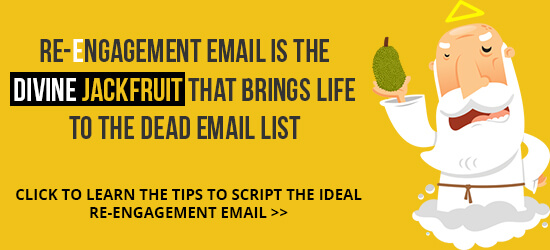
How to plan your win-back email campaigns before winning back your subscribers
Having a re-engagement automation setup is an important step in the winback email campaign workflow. The success of an email marketer depends on how well they can monitor the progress of a customer in the sales funnel and enhance their experience by modifying the emails as needed.
The efforts for winning back your inactive subscriber begins much before you plan your re-engagement emails. It begins with:
- Understanding what factors contribute to inactivity
- What triggered the inactivity
- Identifying the objective behind re-engaging the inactive subscribers
- Preparing the incentives to win back and finally,
- How to keep your customers engaged.
What Determines An Inactive Email Subscriber?
Defining inactivity in your email campaign strategy is very important as your approach will change depending on your win-back being customer-centric or subscriber-centric:
- A customer-centric approach will focus on those inactive subscribers who do open your emails, may or may not be clicking on the CTA, but haven’t purchased anything for long. The end goal of a customer-centric approach will be to motivate the subscriber to make a purchase.
- A subscriber-centric approach will focus on those inactive subscribers who are not opening your emails. The end goal of a subscriber-centric approach will be to motivate the subscriber to open the emails, change their preferences, or (last straw) unsubscribe.
How long before you may add a subscriber to the Inactive list?
For a brand sending bi-weekly emails, the inactivity period might be 3 months; and for a brand with a monthly email sending schedule, the inactivity period might be 6 months or a year.
Ways to tackle different levels of inactivity
Now that you have a clear understanding of which of your inactive subscribers are worth winning back, here’s how to target them:
- For a subscriber-centric approach, those subscribers who have not opened the previous 5-10 emails are ripe for retargeting.
- For a customer-centric approach, the baseline condition is based on the order value. If someone made high-order purchases in the past and went inactive, they are more likely to return compared to those who made only a couple of purchases in the past.
Winning back your inactive subscribers is a step-by-step process where you need to implement a strategy that starts with your inactive subscribers opening your emails. Once they open the email, the copy should persuade them to click the CTA. Let’s resolve the issues at each stage one at a time.
Stage:1 – Prompt Inactive Subscribers To Open Emails
Subject lines and preheader text are your biggest bet to create successful winback campaigns. The winback email subject lines need to have actionable words such as “Come back, we miss you” or “Is this over?” to motivate your subscribers to take note. Using a shorter subject line is one of the winback email best practices.
Stage:2 – Improving Email Copy
Congratulations! If they open your winback email campaigns based on the subject line, this means they are interested, and it is time for your email copy to shine through. You can either try to win them back with an incentive or tell them to update their preferences to receive more personalized emails. Ask them if they are still interested in being part of your list.
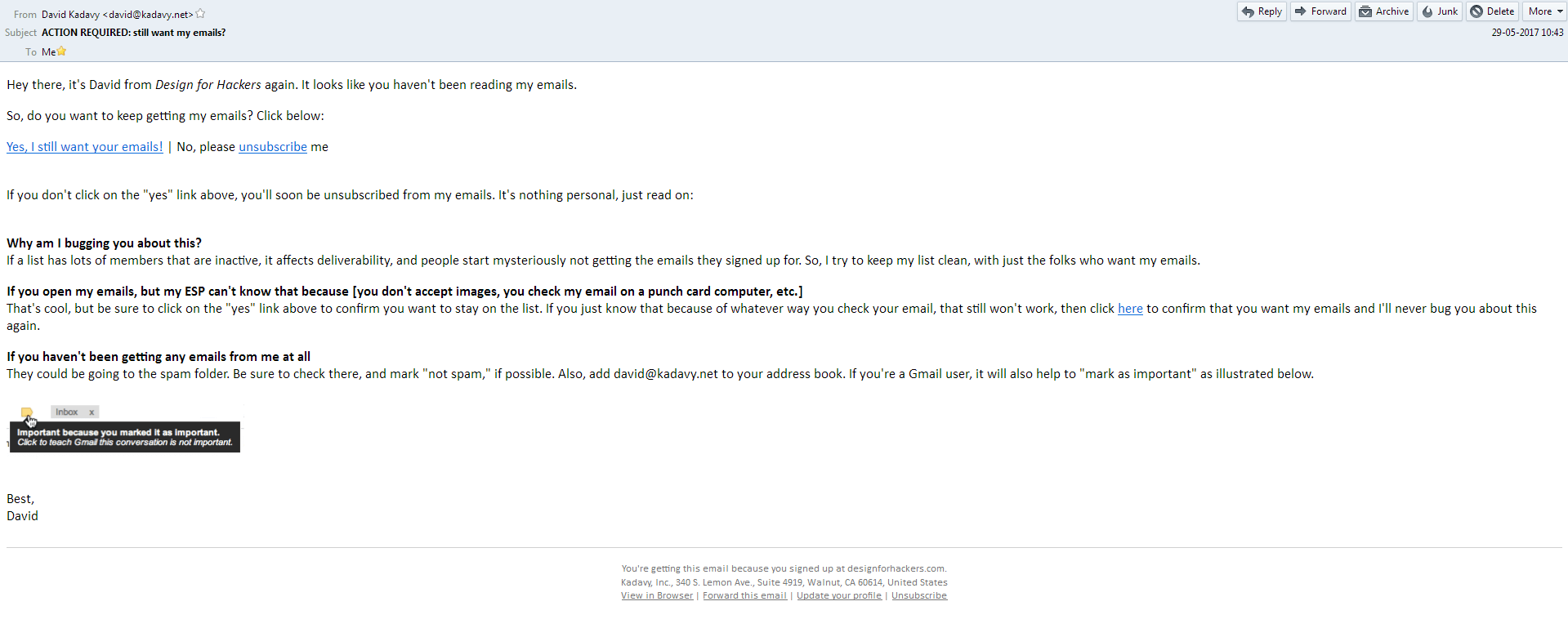
In the above customer winback email example, the sender has introduced himself before proceeding to ask the important question. The subscriber has the choice to either be subscribed or be left with the relevant links.
If the subscriber was active in the past, use the data to send them personalized email content. Teespring has created one of the most effective winback email examples with a cute puppy face as the hero image.
Stage:3 – Calling them to action
Those who are inactive are not going to readily check out all products that you showcase, as soon as you send a re-engagement email. So, one golden rule for CTA in customer winback emails is: USE ONLY ONE CTA. In the following winback email campaign examples, the brands have not only featured a single CTA button, they have made it enticing and compelling.
Grammarly has a giant red button in their mobile responsive email template. Even those who didn’t read the email copy would be tempted to click it.

Puma has incentivized the dormant subscribers with a 15% discount offer to encourage them to take action. Also, they have made it a limited-time offer to create FOMO and drive instant conversions.
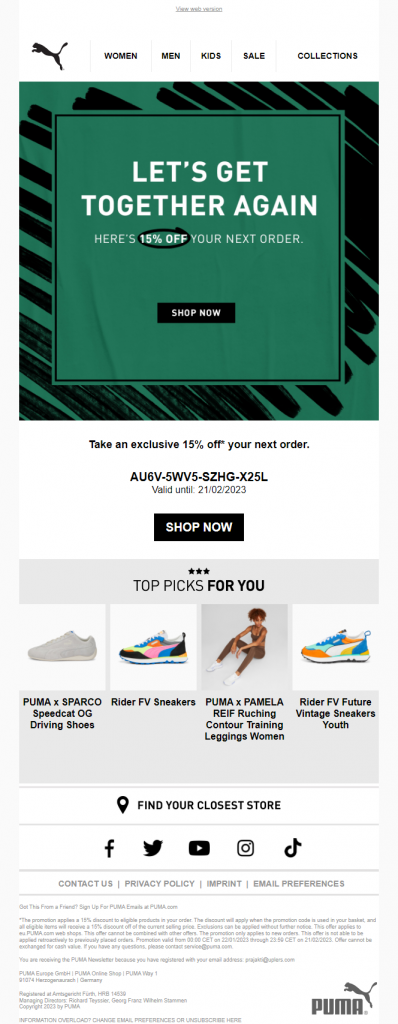
It is a good idea to let your subscribers know what they missed while they were away or inactive. That’s exactly what Saks Fifth Avenue has done. They have shared the latest updates about their online store and prompted the readers to “see what’s new”.
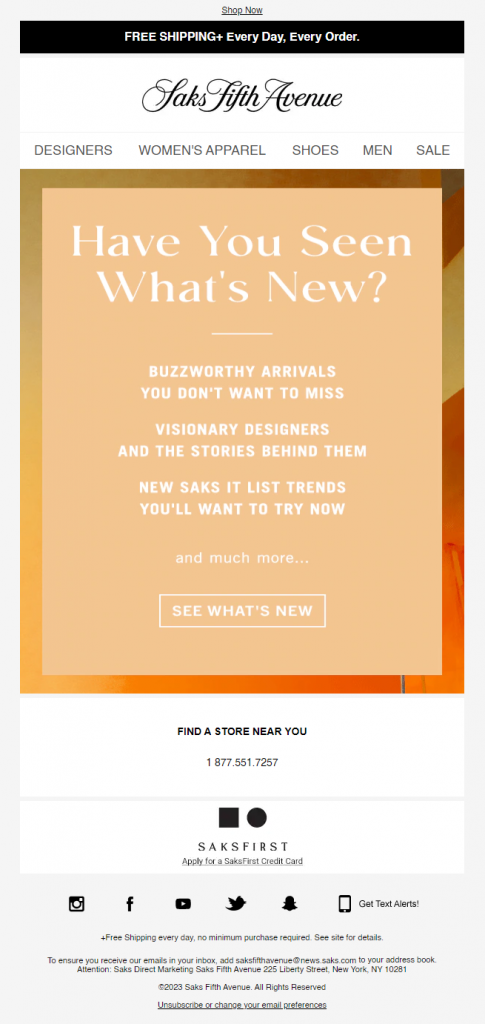
Animoto has used Dean Jackson’s nine-word template in their re-engagement email. It taps into the FOMO instinct of the readers by asking if they still wish to hear from the brand or are looking for something.
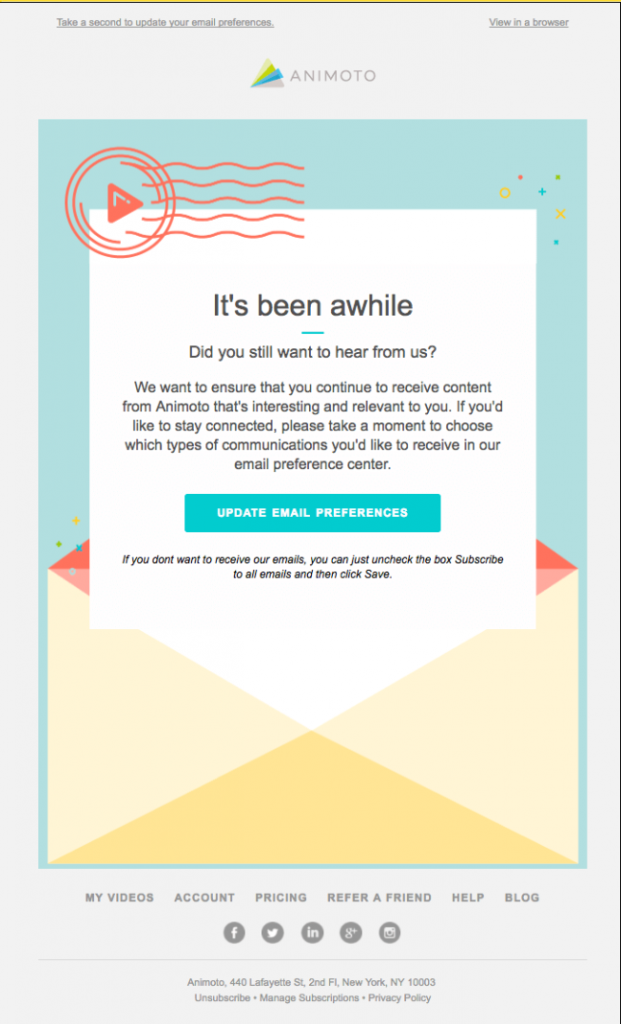
Stage:4 – Making them pay… for their products
Great! They are back in your sales funnel. Now you need to make sure that they are not going inactive in a while. In case they do, it is an indication that your regular content is not engaging enough and needs improvement.
Key Takeaways
There are quite a few things that can make a customer winback email template impressive. All you need to do is follow the winback email best practices:
- Tell subscribers what they have missed while they were away
- Propose an exclusive offer
- Give a collection of offers that makes it difficult to say NO
- Provide other ways to connect
- Send them a compilation of missed notifications
- Use humor to grab eyeballs
- Remind subscribers why they are on your list
How We Can Help
Are you struggling with your re-engagement email conversion and looking for email campaign management services? Our campaign management experts can help you build a high converting subscriber win-back strategy. Chat with our experts today!

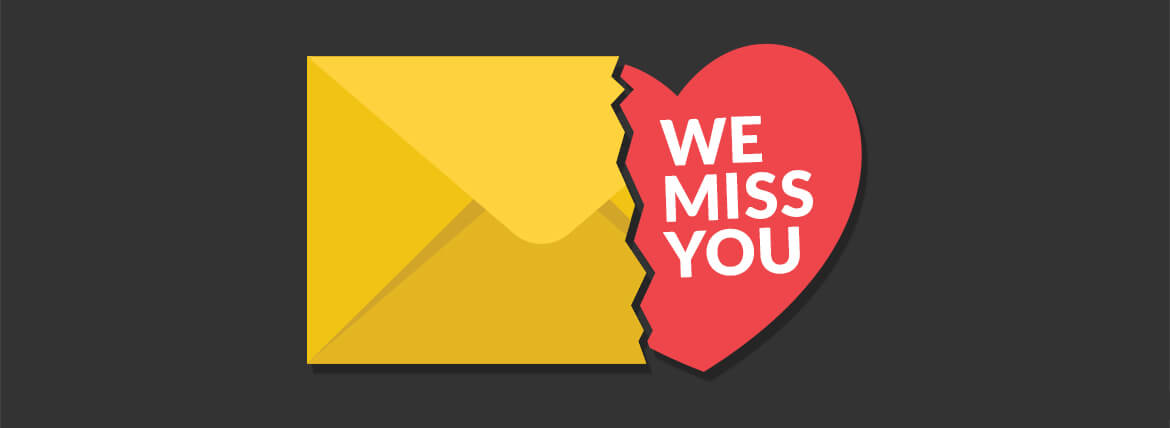


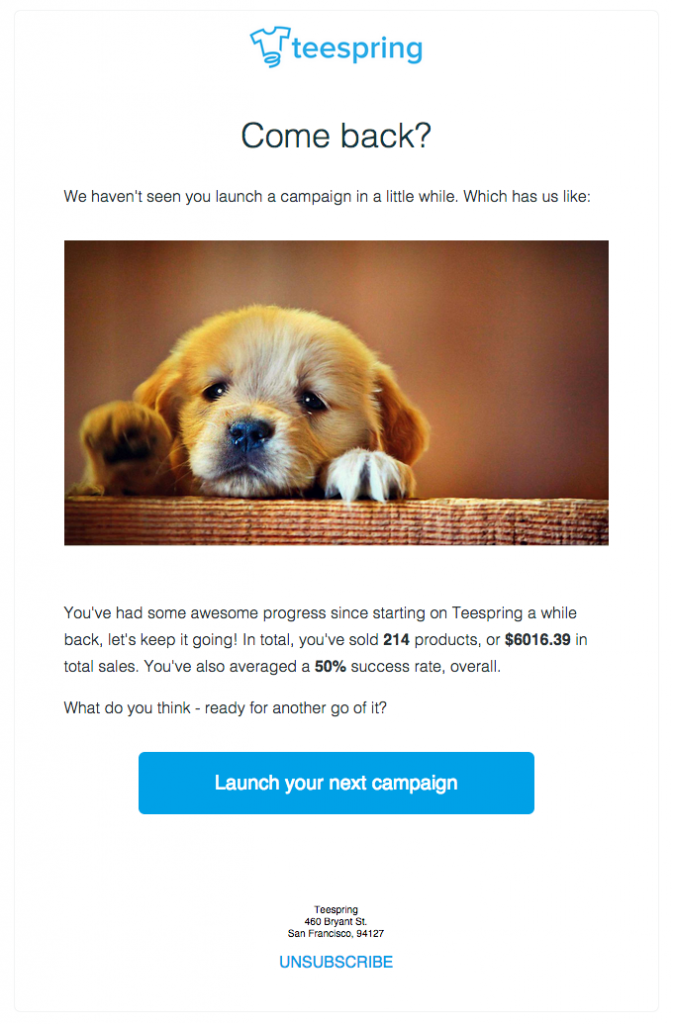
Kevin George
Latest posts by Kevin George (see all)
Iterable Updates: What you should know about the latest modifications in the platform’s email editor
How to Keep Subscribers in the Know with Notification Emails: A Detailed Guide to Doing it Right